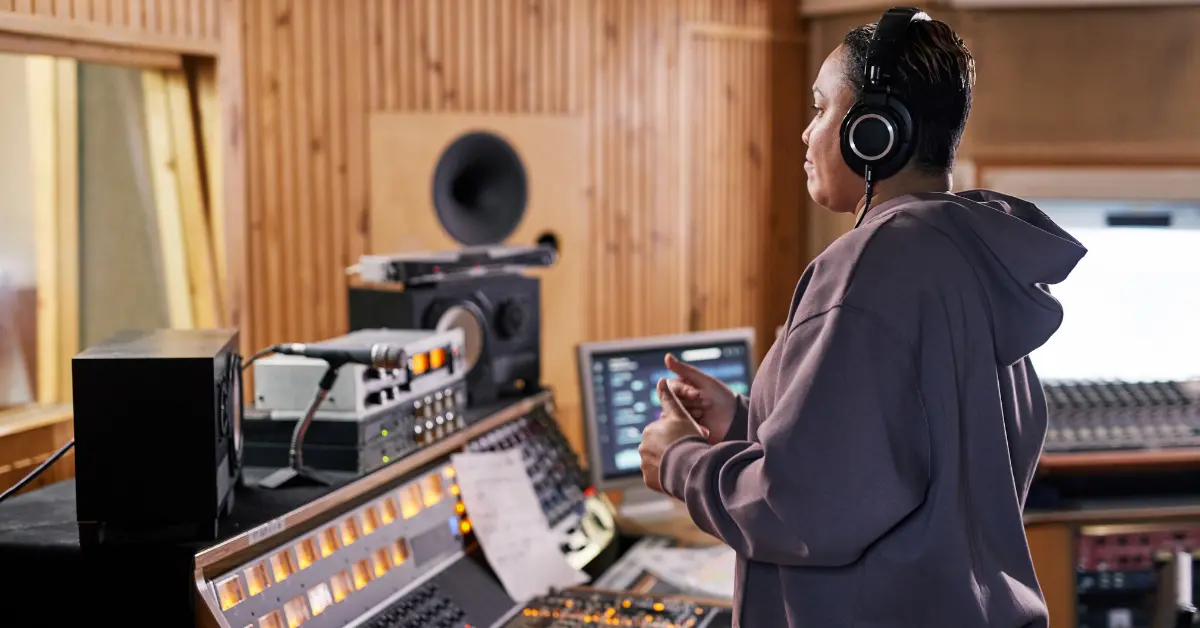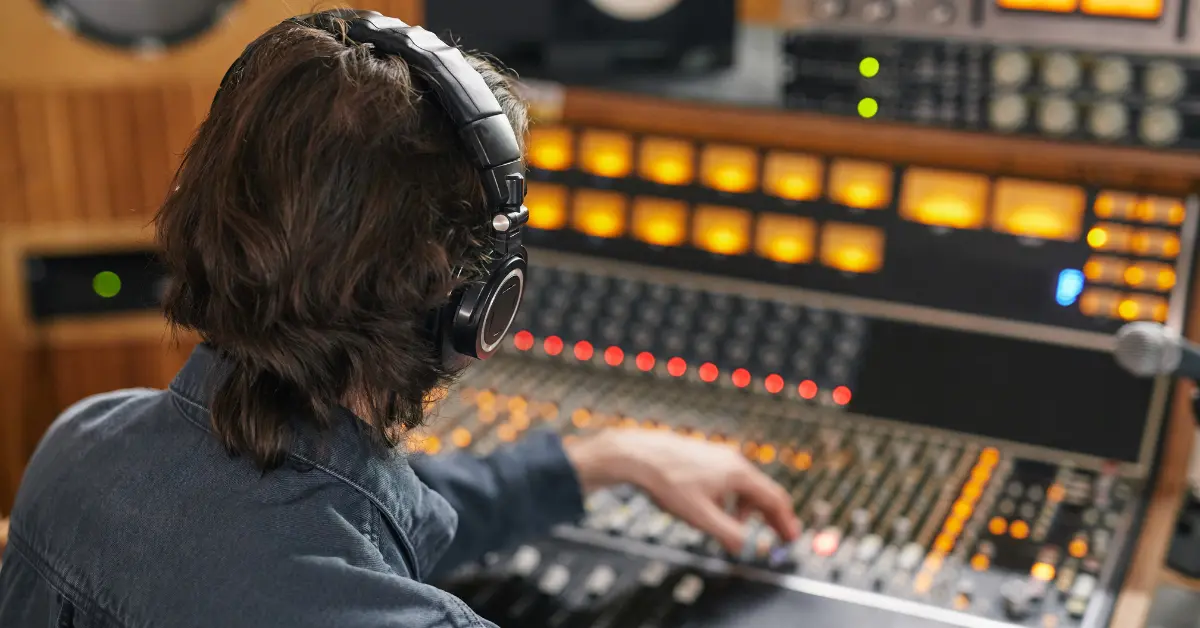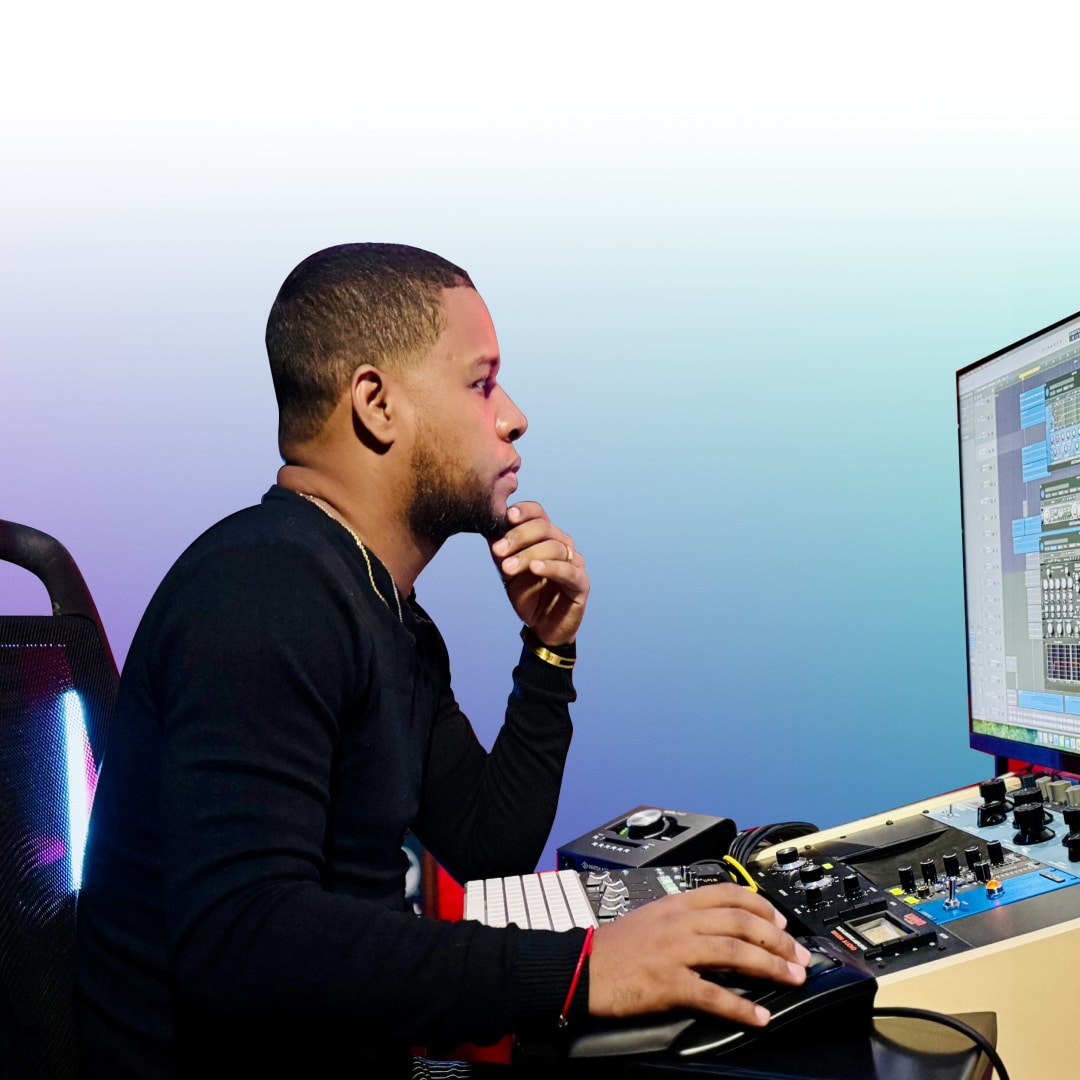Uploading Music on Spotify
Importance of Publishing Music on Spotify
Learning how to publish music on Spotify is essential for any aspiring artist. Spotify is one of the largest music streaming platforms globally, providing artists with an unparalleled opportunity to reach millions of listeners. Publishing your music on Spotify can significantly enhance your visibility, allowing you to connect with a global audience and grow your fan base. This platform’s extensive reach and user-friendly interface make it an ideal choice for artists looking to expand their presence in the music industry.
Benefits of Reaching a Global Audience
Publish music on Spotify and gain access to a worldwide audience. This platform enables artists to share their work with listeners across different countries and cultures. By reaching a global audience, you increase your chances of gaining international recognition and expanding your fan base. Additionally, Spotify’s algorithms can help your music reach new listeners who might enjoy your style, further boosting your chances of success. The global reach of Spotify provides artists with unique opportunities to grow their careers.
Overview of the Process
Understanding how to publish a song on Spotify involves several steps. First, you need to choose a music distribution service to get your music on Spotify. Then, you will set up your artist profile, prepare your music files, and upload them through the distribution service. After your music is uploaded, you can monitor its status and promote it to reach a broader audience. This process, while straightforward, requires careful attention to detail to ensure your music is presented professionally and reaches the right listeners.
Free vs. Paid Distribution Services
When you decide to publish a song on Spotify, you have the option of using free or paid distribution services. Free music publishing sites, such as Amuse, RouteNote, and Soundrop, allow you to upload your music without any upfront costs. These services typically take a small percentage of your royalties in exchange for their distribution. On the other hand, paid services might offer additional features such as faster release times, more extensive distribution networks, and advanced analytics. Choosing the right service depends on your specific needs and budget.
Choosing a Free Music Distribution Service
Overview of Free Distribution Platforms
Several free music publishing sites can help you get your music on Spotify. These platforms offer different features and benefits, making it essential to compare them to find the best fit for your needs. Some popular free distribution services include Amuse, RouteNote, and Soundrop. Each platform has its unique set of tools and requirements, so understanding how they work can help you make an informed decision. Utilizing these free platforms allows you to publish your music without any initial financial investment.
Amuse: Features and Benefits
Amuse is a popular music publishing site that offers free distribution to Spotify and other streaming platforms. Amuse provides a user-friendly interface, making it easy for artists to upload and manage their music. Additionally, Amuse offers a royalty advance feature, allowing artists to receive an advance payment on their expected royalties. This platform also provides valuable analytics to help you track your music’s performance. Amuse’s combination of free distribution and helpful features makes it an attractive option for many artists.
RouteNote: How It Works
RouteNote is another excellent option for publish music to Spotify for free. This platform offers both free and premium distribution services, allowing artists to choose the level of service that best fits their needs. With RouteNote, artists can distribute their music to Spotify and other major streaming platforms. The free service allows you to keep 85% of your royalties, while the premium service lets you keep 100% for a small annual fee. RouteNote also provides detailed analytics to help you understand your music’s performance.
Soundrop: A Comprehensive Guide
Soundrop is a unique music publishing website that focuses on distributing cover songs and original music. This platform allows artists to upload their music for free and distributes it to Spotify and other streaming services. Soundrop takes a small percentage of your royalties in exchange for their distribution services. Additionally, Soundrop offers tools to help you manage your music rights and royalties, making it a comprehensive solution for artists. Using Soundrop can help you get your music on Spotify without any upfront costs.
Comparing Free Distribution Services
When choosing a free music publishing site, it’s essential to compare the features and benefits of each platform. Amuse offers a user-friendly interface and royalty advances, while RouteNote provides flexible pricing options and comprehensive analytics. Soundrop is ideal for artists looking to distribute cover songs and manage their music rights. By evaluating these platforms’ features, you can determine which service best meets your needs and helps you achieve your music distribution goals.
Setting Up Your Artist Profile
Creating an Account on Distribution Platforms
To publish a song to Spotify, you first need to create an account on your chosen distribution platform. This process typically involves providing basic information such as your name, email address, and password. After creating your account, you will need to verify your email address to activate it. Some platforms may also require additional information, such as your artist name and music genre. Completing this step ensures you can start uploading your music and managing your profile.
Filling in Your Artist Profile Information
Once your account is set up, the next step is to fill in your artist profile information. This includes details such as your artist name, biography, and genre. Providing accurate and comprehensive information helps listeners learn more about you and your music. It also makes your profile look professional and appealing. Be sure to include links to your social media accounts and website, if you have one. This can help improve your discoverability and connect with fans more effectively.
Importance of Accurate and Comprehensive Details
Accurate and comprehensive details in your artist profile are crucial for Spotify publishing. A well-completed profile helps you stand out and appear more professional. It also makes it easier for listeners to find and connect with you. Ensure that all information is up-to-date and accurately reflects your music and brand. Regularly updating your profile with new releases, photos, and tour dates can keep your fans engaged and informed about your activities.
Linking Social Media for Better Discoverability
Linking your social media accounts to your artist profile is an effective way to increase your discoverability. This allows fans to easily follow you on platforms like Instagram, Twitter, and Facebook. It also enables you to share updates and engage with your audience directly. Connecting your social media accounts helps you build a stronger online presence and reach a broader audience. This integration is essential for growing your fan base and promoting your music more effectively.
Preparing Your Music for Upload
Choosing the Right Audio Format (WAV, FLAC)
When learning how to upload music to Spotify as an artist, choosing the right audio format is crucial. Spotify recommends using high-quality formats such as WAV or FLAC for the best sound quality. These formats preserve the audio integrity and ensure your music sounds great on all devices. Avoid using compressed formats like MP3, which can reduce sound quality. Preparing your music in the right format is the first step to ensuring it meets Spotify’s standards.
Importance of High-Quality Audio Files
High-quality audio files are essential for making a good impression on listeners. Poor audio quality can deter potential fans and reduce your chances of success. Ensure your recordings are clear and free of any distortions or background noise. Investing in professional recording and mixing can significantly improve the quality of your music. High-quality audio files not only enhance the listening experience but also reflect your dedication and professionalism.
Providing Complete Metadata (Song Title, Album Name, Genre)
Metadata includes information such as song title, album name, and genre. Providing complete and accurate metadata is essential for publishing music on Spotify. This information helps listeners identify and find your music easily. It also ensures your music is correctly categorized and displayed on Spotify. Double-check all metadata before uploading to avoid any mistakes. Accurate metadata is crucial for a professional presentation and optimal discoverability.
Designing High-Resolution Cover Art (3000×3000 pixels)
High-resolution cover art is a vital part of your music’s presentation. Spotify requires cover art to be at least 3000×3000 pixels in size. Ensure your cover art is visually appealing and reflects the theme of your music. High-quality cover art makes your music look professional and can attract more listeners. Investing time in creating or commissioning great cover art is worthwhile and enhances your overall branding.
Step-by-Step Guide to Uploading Music
Uploading Your Music on Amuse
To publish music on Spotify using Amuse, follow these steps:
- Sign Up or Log In
- Create an account on Amuse or log in if you already have one.
- Prepare Your Music
- Ensure your audio files are in the correct format (WAV or FLAC) and have complete metadata.
- Upload Your Tracks
- Navigate to the upload section and select your audio files.
- Add Metadata and Cover Art
- Fill in the required metadata and upload your high-resolution cover art.
- Submit for Distribution
- Review your submission and click “Submit” to send your music for distribution.
Steps to Upload on RouteNote
For publishing a song on Spotify via RouteNote:
- Create or Log In to Your Account
- Sign up for a RouteNote account or log in to your existing account.
- Prepare Your Audio Files
- Make sure your audio files meet the format requirements (WAV, FLAC).
- Upload Your Music
- Go to the upload section and upload your audio files.
- Enter Metadata
- Provide complete and accurate metadata for each track.
- Upload Cover Art
- Ensure your cover art is high-resolution (3000×3000 pixels) and upload it.
- Submit for Distribution
- Review your submission and click “Submit” to start the distribution process.
Uploading Process on Soundrop
To publish a song to Spotify using Soundrop, follow these steps:
- Sign Up or Log In
- Create an account on Soundrop or log in if you already have one.
- Prepare Your Music
- Ensure your audio files are in high-quality formats such as WAV or FLAC and that your metadata is complete.
- Upload Your Tracks
- Navigate to the upload section and select your audio files for upload.
- Enter Metadata
- Fill in the required metadata fields, including song title, album name, and genre.
- Upload Cover Art
- Ensure your cover art is high-resolution (3000×3000 pixels) and upload it.
- Submit for Distribution
- Review all the details of your submission and click “Submit” to distribute your music to Spotify and other platforms.
Reviewing and Submitting Your Release
Before you finalize your submission on any music publishing site, it’s crucial to review all your details carefully:
- Check Audio Quality
- Ensure that your audio files are high-quality and free from any errors or distortions.
- Verify Metadata
- Double-check all metadata for accuracy, including song titles, album names, and genre classifications.
- Confirm Cover Art
- Make sure your cover art meets the resolution requirements and accurately represents your music.
- Preview Submission
- Use the preview feature (if available) to see how your release will appear on Spotify.
- Submit for Review
- Once everything is verified, click “Submit” to send your music for review and distribution. Monitoring the status of your release will help you stay informed about its progress.
Monitoring and Managing Your Release
Checking the Status of Your Submission
After submitting your music for distribution, it’s important to regularly check the status of your submission. Most music publishing websites provide a dashboard where you can monitor the progress of your release. This allows you to see if your music has been approved, is pending, or requires additional information. Staying updated on the status of your submission helps you address any issues promptly and ensures a smooth release process.
Understanding Approval Times and Release Dates
Approval times can vary depending on the distribution service and the complexity of your release. Generally, it takes a few days to a couple of weeks for your music to be reviewed and approved. Once approved, your music will be scheduled for release on Spotify. Understanding these timelines helps you plan your promotional activities effectively. Keep in mind that certain times of the year, like holidays, might experience delays.
Using the Distributor’s Dashboard for Updates
Most free music publishing sites offer a dashboard where you can track all aspects of your release. This includes the status of your submission, distribution updates, and performance analytics. Regularly checking your dashboard ensures you stay informed about any changes or updates regarding your music. Utilizing this tool effectively can help you manage your releases and optimize your promotional strategies.
Handling Issues and Notifications
Sometimes issues may arise during the distribution process, such as metadata errors or audio quality concerns. It’s crucial to address these notifications promptly to avoid delays in your release. If your distributor contacts you with a problem, follow their instructions carefully to resolve the issue. Keeping an eye on your notifications and responding quickly helps ensure your music gets published on time without any hitches.
Optimizing Your Spotify Artist Profile
Claiming Your Spotify for Artists Profile
After successfully publishing music on Spotify, it’s essential to claim your Spotify for Artists profile. This platform provides you with tools to manage your presence on Spotify and gain insights into your audience. To claim your profile, visit the Spotify for Artists website and follow the verification process. This typically involves verifying your identity and linking your profile to your distributor. Claiming your profile allows you to customize your artist page and access valuable analytics.
Customizing Your Artist Page
Customizing your artist page is an important step in optimizing your presence on Spotify. This includes adding a bio, updating your profile picture, and featuring your latest releases. Make sure your bio is engaging and provides listeners with interesting information about you and your music. Adding high-quality images and keeping your profile up-to-date makes your page look professional and appealing to listeners.
Updating Your Bio and Sharing Playlists
Regularly updating your bio and sharing playlists can help keep your audience engaged. An updated bio with the latest information about your projects and releases ensures fans stay informed. Creating and sharing playlists that include your music, as well as tracks from artists you admire, can increase your visibility and attract new listeners. Playlists are a powerful tool for promoting your music and connecting with a broader audience on Spotify.
Using Analytics to Understand Your Audience
Spotify for Artists provides detailed analytics that help you understand your audience. These insights include information about who is listening to your music, where they are located, and how they are discovering your tracks. Using this data, you can tailor your promotional strategies to better reach your target audience. Understanding your listeners’ demographics and preferences can help you create content that resonates with them and grows your fan base.
Promotional Strategies for Your Music
Leveraging Social Media for Promotion
Social media is a powerful tool for promoting your music on Spotify. Share links to your Spotify tracks and playlists on platforms like Instagram, Twitter, and Facebook. Engaging with your followers and using hashtags can increase your reach. Posting regular updates about your music, behind-the-scenes content, and engaging with fans helps build a strong online presence. Leveraging social media effectively can drive more traffic to your Spotify profile and increase your streams.
Effective Email Marketing Tactics
Email marketing is another effective strategy for promoting your music. Build a mailing list of your fans and send out regular newsletters with updates on your latest releases, upcoming shows, and exclusive content. Personalized emails can create a stronger connection with your audience and encourage them to listen to your music on Spotify. Offering incentives like early access to new tracks or exclusive merchandise can also boost engagement and loyalty.
Collaborating with Other Artists
Collaborations with other artists can help you reach new audiences and gain more exposure. Working with artists in your genre or complementary styles allows you to tap into their fan base. Featuring on each other’s tracks or creating joint playlists can benefit both parties. Collaborations also add variety to your music and can lead to exciting creative opportunities. Building relationships with other artists is a valuable way to expand your reach and grow your audience.
Encouraging Fans to Follow and Playlist Your Music
Encouraging your fans to follow you on Spotify and add your tracks to their playlists can significantly boost your visibility. Regularly remind your audience to follow your profile and share your music. Engage with your fans by thanking them for their support and encouraging them to spread the word. Fans who add your music to their playlists help increase your streams and introduce your music to new listeners. Building a loyal fan base that actively promotes your music is crucial for long-term success.
Key Takeaways for Uploading Music to Spotify
Uploading your music to Spotify involves several key steps. Choosing the right distribution service, setting up your artist profile, preparing your music files, and promoting your tracks are all essential components of the process. Understanding these steps and following best practices can help you successfully publish your music on Spotify and reach a global audience.
Use Free Distribution Services
Free distribution services like Amuse, RouteNote, and Soundrop provide accessible ways to get your music on Spotify without any initial costs. These platforms offer valuable tools and features that can help you manage your releases and optimize your promotional efforts. Utilizing these free services can help you maximize your reach and grow your fan base without a significant financial investment.
Final Tips for Successful Music Promotion
Successful music promotion requires a combination of strategies, including social media engagement, email marketing, and collaborations. Regularly updating your Spotify profile and using analytics to understand your audience can help you tailor your promotional efforts. Consistency and creativity in your promotional activities can significantly boost your visibility and increase your streams on Spotify.
Make an Effort to Continuously Engage with Your Audience
Maintaining continuous engagement with your audience is crucial for long-term success. Regularly interact with your fans, update them on your latest projects, and involve them in your music journey. Building a strong connection with your audience fosters loyalty and encourages them to support your music. By staying active and engaged, you can create a dedicated fan base that will help you achieve your goals on Spotify.













